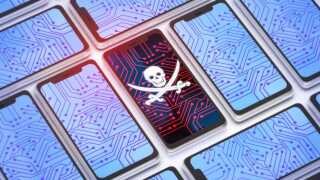Mobile phone data rates have accelerated over the last two decades from 50kbps in 2G GPRS to 100Mbps+ in 4G LTE. This has been driven by Moore’s Law – the doubling in circuit complexity every 2 years – which has enabled increasingly sophisticated digital modulation to be implemented in low-cost chips.
Unfortunately we are approaching the limit of how much data can be crammed into a single radio channel regardless of the cleverness of the modulation – the Shannon Limit. If we are to continue to offer higher data rates to mobile phone users then different approaches are needed such as new radio bands and better “spatial re-use” of existing bands.
Massive-MIMO is a tough challenge for traditional radios, which despite years of digitisation are still at least half analogue. Analogue circuits don’t shrink with Moore’s Law so the large numbers of radios required will continue to be expensive. Even worse, if you put lots of analogue radios on one chip they tend to interact and degrade each other’s ability to receive and transmit high quality signals.
“Spatial re-use” allows the same radio spectrum to be re-used in multiple physical locations. The most powerful implementation is “massive-MIMO” where the base-station employs of an array of dozens of radios to beam-form independent radio links to each of the handsets in the cell.
New bands are opening up for mobile data, for example in “TV Whitespace” and licence-exempt spectrum at 916MHz and 60GHz. However a single analogue radio that covers many frequencies and standards will consume much more power than today’s specialised radios. The alternative of several radios to cover different frequency bands is needlessly expensive and bulky.
Fortunately Moore’s Law comes to the rescue again by allowing new types of radio architectures. Processor clock frequencies are already higher than cellular signals, so why can’t digital circuits generate the radio signals?
Recent developments in Analogue to Digital Converters (ADCs) and Digital to Analogue Converters (DACs) have allowed the creation of true Software Defined Radios that convert directly between radio signals and digital samples. Since the radios are mostly digital they can operate across a wide range of frequencies and can flexibly adapt to different radio standards. Unfortunately these new ADCs and DACs are costly and power-hungry making them unsuitable for many applications.
“Pizzicato” is a promising innovation in low-cost digital radio transmitters. It is based on the delta-sigma DACs already used for audio signals, but with a high-speed architecture that allows direct generation of radio signals at GHz frequencies. A prototype shown at Mobile World Congress demonstrated the generation of 14 mobile phone base-station signals at 900MHz.
The silicon cost of this transmitter is less than 10 cents. Many of these transmitters could be packed together into a single chip to allow the creation of massive-MIMO transmitters that do not suffer from the mutual interference seen in analogue radios. In the future similar approaches will be applied to the receiver to allow the creation of low-cost digital transceivers.
To date, these new digital radio architectures still need an analogue amplifier. An exciting research topic is the “Class-S” digital switching RF amplifier. Similar Class-D amplifiers are already used in audio applications, achieving power efficiencies in excess of 80%. Class-S RF amplifiers promise to be both more frequency agile and more energy efficient than today’s analogue amplifiers.
So it looks as if it will be possible to maintain the march to higher data-rates in cellular networks, thanks to Moores’ Law and the gradual transition from analogue to entirely digital radios.




